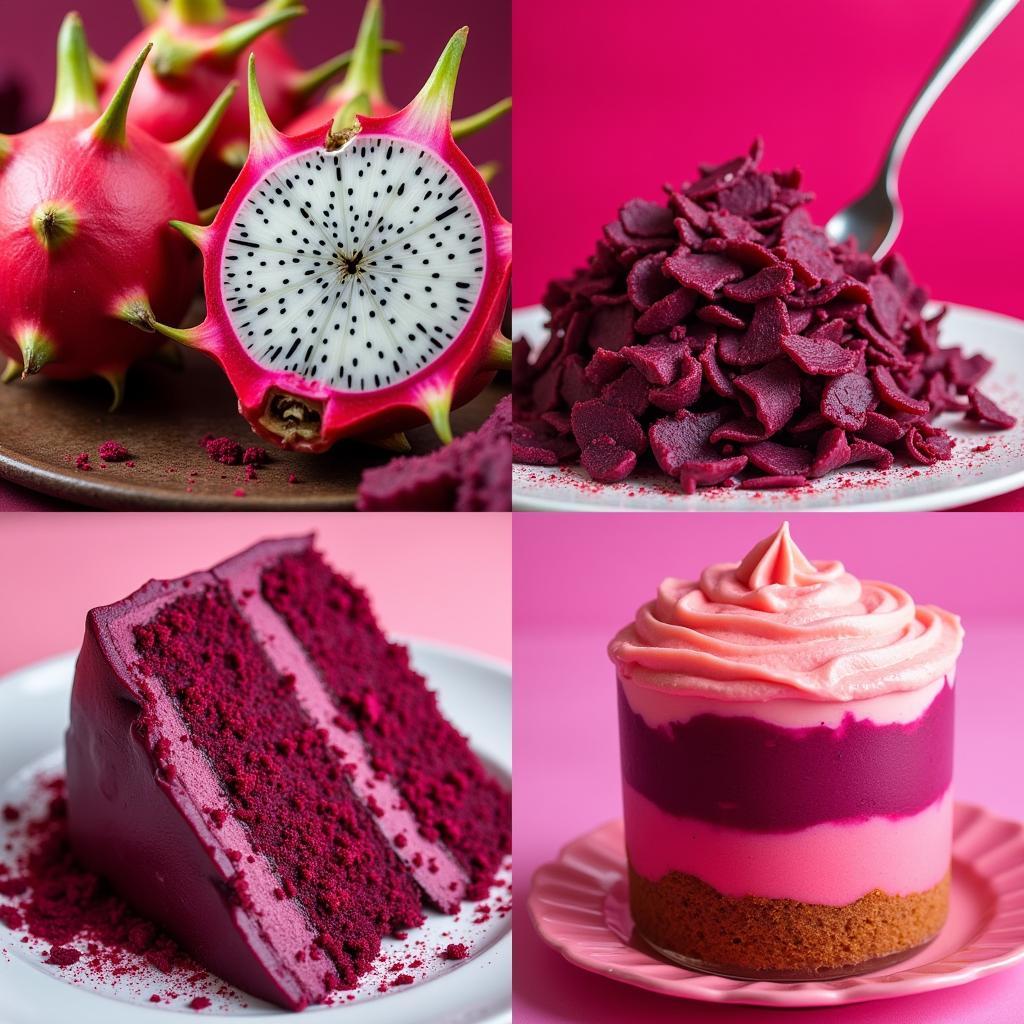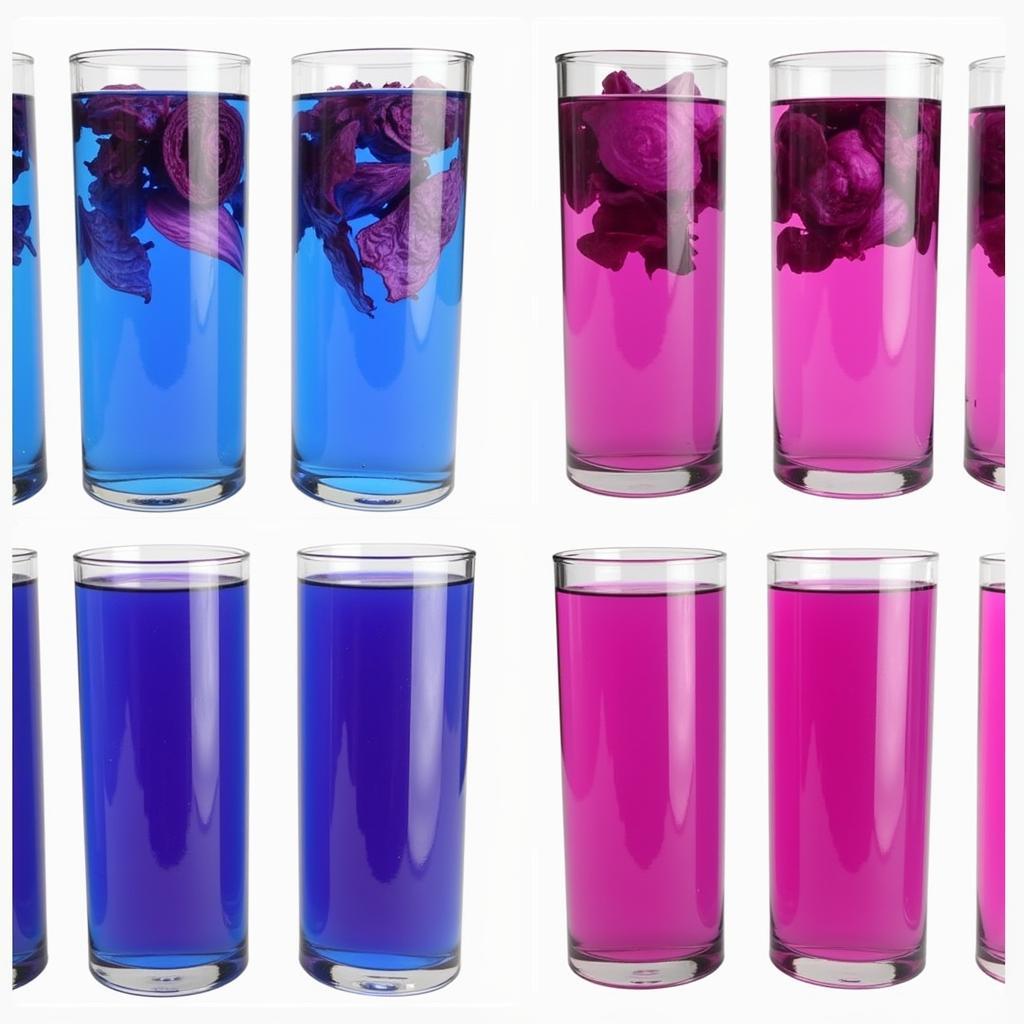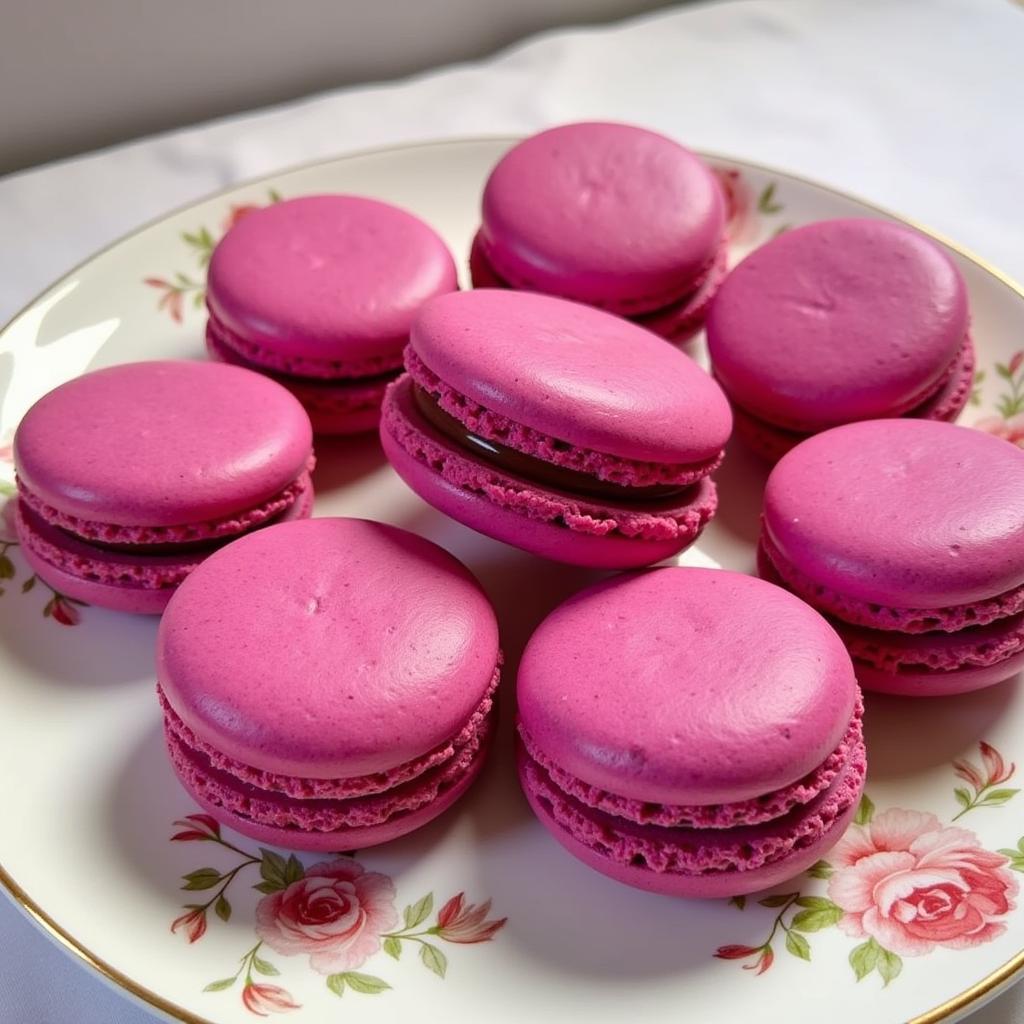Magenta Food Color, a vibrant and eye-catching hue, might seem like a modern invention. However, this alluring shade has a history as rich and diverse as its appearance. From natural sources to synthetic creations, magenta’s journey to our plates is a fascinating exploration of food, science, and culture.
 Magenta Food Examples
Magenta Food Examples
Natural Origins: Where Does Magenta Food Color Come From?
Nature offers a bounty of ingredients that contribute to the magenta spectrum. Beets, with their earthy sweetness, are perhaps the most well-known source. The vibrant pigment, betalain, is responsible for their distinctive color and has gained popularity as a natural food coloring agent.
But beets are not alone. Red cabbage, depending on the pH level, can yield a range of colors from deep blues to vibrant magentas. Similarly, the exotic dragon fruit with its speckled flesh offers a stunning display of natural magenta.
 Red Cabbage PH Test
Red Cabbage PH Test
Beyond the Beets: Exploring Synthetic Magenta Food Color
While natural options abound, the food industry often turns to synthetic alternatives for reasons of consistency, stability, and cost-effectiveness. Food coloring, often listed as Red No. 3 or Erythrosine, can achieve a bright magenta hue. It’s important to note that while approved for use in many countries, there have been ongoing discussions about the potential health effects of synthetic food dyes.
Magenta Food Color: A Feast for the Eyes
The allure of magenta in food extends beyond its inherent beauty. This vibrant color has the power to influence our perception of flavor and enhance our sensory experience. Studies have shown that bright colors can trigger our salivary glands, making us anticipate sweetness and flavor intensity.
 Magenta Macarons Arrangement
Magenta Macarons Arrangement
Think of a perfectly ripe watermelon, its vibrant magenta flesh promising juicy sweetness. Or a plate of beautifully decorated magenta macarons, their delicate shells hinting at the sugary delight within. Magenta’s visual appeal plays a crucial role in elevating our enjoyment of food.
Tips for Using Magenta Food Color
Whether you’re a seasoned chef or a home baker, incorporating magenta food color can add a touch of whimsy and visual interest to your creations. Here are a few ideas:
- Vibrant Frostings and Icings: Transform cakes, cupcakes, and cookies into eye-catching treats.
- Colorful Cocktails: Add a splash of magenta to cocktails, mocktails, and infused waters.
- Playful Pancakes and Waffles: Use natural beet juice to create fun and healthy breakfast treats.
- Eye-Catching Desserts: From magenta-swirled cheesecakes to ombre-layered parfaits, the possibilities are endless.
Conclusion
Magenta food color, whether derived from nature’s bounty or crafted through scientific innovation, holds a unique position in our culinary world. It’s a testament to the powerful connection between food and our senses, reminding us that eating is not just about nourishment but also about enjoyment and visual delight. So, the next time you encounter a dish adorned with this vibrant hue, take a moment to appreciate the fascinating history and the sensory journey that magenta food color represents.
FAQ
1. Is magenta food color safe to consume?
The safety of food coloring, both natural and synthetic, is a topic of ongoing discussion. While approved for use in many countries, it’s always a good practice to consume food coloring in moderation and to be aware of any potential sensitivities or allergies.
2. What are some alternatives to synthetic magenta food color?
Natural alternatives like beet juice, red cabbage extract, and dragon fruit offer vibrant hues without the use of artificial ingredients.
3. Can I make my own magenta food color at home?
Yes, you can create beautiful magenta hues using natural ingredients like beets and red cabbage. Experimenting with different concentrations and pH levels can yield a spectrum of shades.
4. Does magenta food color affect the taste of food?
While magenta food color itself doesn’t impart a specific flavor, its vibrant appearance can influence our perception of sweetness and flavor intensity.
5. Where can I buy magenta food color?
Natural food coloring options are readily available in health food stores and online retailers. Synthetic food coloring can be found in the baking aisle of most supermarkets.
Need More Information?
Have more questions about natural food dyes? Check out our blog post on natural purple food dye for more insights!
Still Have Questions?
We’re here to help! Contact us at Phone Number: 02437655121, Email: [email protected] Or visit us at: 3PGH+8R9, ĐT70A, thôn Trung, Bắc Từ Liêm, Hà Nội, Việt Nam. Our dedicated customer support team is available 24/7 to assist you.